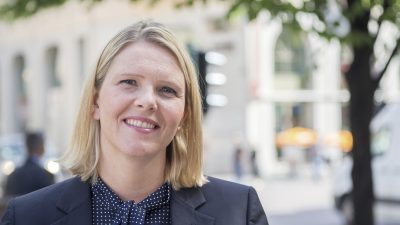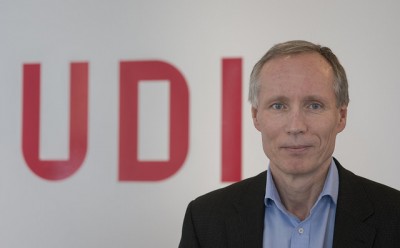Immigration and Integration Minister Sylvi Listhaug was predictably delighted by confirmation of the lowest numbers of asylum seekers arriving in Norway since 1995. Others claimed a wealthy country like Norway has no reason to be proud that it’s not offering refuge to many more people who need it.

“We haven’t seen more people forced to flee since World War II,” said Jan Egeland, secretary general of the Norwegian Refugee Council. He hopes for a turning point in 2018, and that solutions can be found for the world’s humantarian crises.
Egeland, a career diplomat and former UN envoy, has been highly critical that his own homeland hasn’t been willing to take in more people fleeing war, terrorism and persecution. The numbers released by Norway’s state immigration agency UDI (Utlendingsdirektoratet) this week offered no solace: Only 3,546 asylum seekers arrived in Norway in 2017. Of those, 1,252 were sent to Norway from refugee camps in Italy and Greece as part of Norway’s agreement to accept some of the refugees in the EU’s relocation program. It’s meant to help relieve the burden on the two EU countries where the vast majority of refugees from the Middle East and Africa have arrived.
UDI Director Frode Forfang said that means less than 2,300 people actually made it to Norway on their own to seek asylum. That compares to more than 31,000 who arrived during the refugee influx of 2015, before Norway’s border to Russia was secured against migrants and before the EU closed its borders and blocked migration from Greece, Italy and the Balkans to those fleeing Syria, Afghanistan, Somalia and other troubled countries.

Forfang announced that the arrival numbers last year were so low that his staff had to go back to the mid-1990s, after the Balkan refugee influx, to find any lower. He said UDI expects arrivals this year to be around 3,000.
“The trend towards low arrival numbers has been strengthened,” Forfang said. “We’re now at a level that’s lower than it was in the years before 2015.” Much lower, in fact, given the roughly 11,000 asylum seekers who arrived every year between 2010 and 2014. UDI, as a result, has been shutting down all the asylum centers set up around the country to deal with the major influx in 2015.
Minister takes credit
The trend pleases government minister Listhaug, who, along with her conservative Progress Party, has long advocated restrictive immigration policy and “strict but fair” asylum guidelines. “In addition to the border controls down in Europe, we have tightened immigration policy and been clear in our communication that you can’t remain in Norway if you don’t have a right to protection,” Listhaug told newspaper Dagsavisen on Friday.
Listhaug all but boasted over Norway’s low arrival numbers compared to those in Sweden, which she said took in more than 25,000 asylum seekers last year. “Since Sweden lies nearly as far north as Norway, it can’t be only the closed borders (in Southern Europe) that are the reason so few are coming (to Norway),” said Listhaug as she apparently sought credit for the low numbers she wants. “Policy, signals and clear communication are also important.”
Sweden, unlike Norway, is a member of the EU, however, and obligated to take in more asylum seekers relocated from Greece and Italy. The refusal of other EU members such as Poland and Hungary to take in their allotted share of refugees has added to the burden on other EU members as well, and even set off threats of sanctions against Poland.
‘Asylum policy not decisive’
Morten Bøas, a researcher at the Norwegian foreign policy institute NUPI, told Dagsavisen that Norwegian asylum policy has little to do with how many would-be refugees arrive in Norway. “Fewer people are coming Norway because fewer people are coming to Europe,” Bøas said. “That’s the main clarification. In some refugee circles, some countries are viewed as easier to enter than others, and that can set off rumours. Then a restrictive policy (such as Norway’s) can have an effect, but by and large it’s not determined by what a minister up on a pile of rocks here does. We have no control over the EU’s border policies and we don’t play any decisive role in the political processes in the countries where refugees are coming from, either.”
Several opposition politicians in Parliament were not proud of Norway’s low arrivals numbers. “There aren’t fewer people who need protection in the world,” said Karin Andersen, an MP for the Socialist Left party (SV). She called the low numbers “a result of closed borders around Europe and within Europe,” adding “that’s the sad side of this.”
Andersen and several other MPs, also within the centrist Christian Democrats and Liberal parties, want Listhaug and the rest of the Norwegian government to take in more refugees already registered by the UN and languishing in camps waiting for resettlement. “The capacity in the refugee camps is at the bursting point,” Andersen told Dagsavisen. “Norway must do more to strengthen asylum rights internationally. We can’t be a passive observer to what’s playing out in Europe. It’s in everyone’s best interests that the shared responsibility (for refugees) is more fair.”
newsinenglish.no/Nina Berglund

